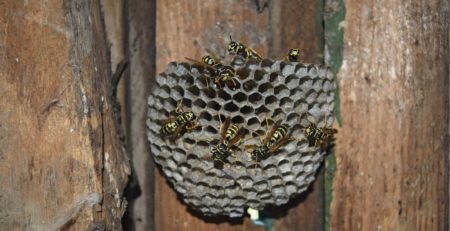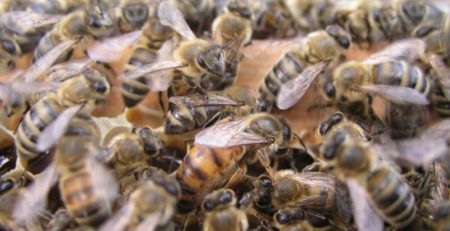5 Tips for Bee Safety
With spring fully underway and summer around the corner in Orange County, bee removal professionals are expecting a flood of requests to help with bee-related incidents. The truth is that we share an environment with our honeybees, which is why we see them around our homes, gardens, and parks. They’re all around us, collecting nectar and distributing pollen and establishing hives.

Fortunately, bees are not malicious creatures. While many people have been stung, Orange County bee removal experts say that bees are not looking to hurt you. Like most animals, they are only reacting to a perceived threat. Most bees would prefer to leave you alone, as long as you’re leaving them alone. However, there are some cases in which an interaction can’t be avoided.
In order to prepare you for any bee-related incidents, experts in removing bees in Orange County are here to share 5 helpful tips for bee safety.
When coming into contact with a bee, do not swat at it or make any sudden, jerky movements.
Bees are not flies. So, when you see a flying insect come close to you, make sure that you know what it is before swatting it away. While a fly may go away at the sight of your waving hand, a bee may determine that this is a significant threat and sting you. Bee vision is largely reliant on detecting motion so this is why bees are so sensitive to your movements.
Usually, when a bee is flying around you, it is trying to determine if you’re a flower. Bright clothing and perfumes can be especially confusing to bees. So, if you notice a bee getting close to you, stay calm, still, and wait for them to fly away. The bee will not sting you unless it perceives an act of aggression.
If you see a hive, leave it alone.
Hives can be built in and around homes, which can be quite disturbing for the people affected. However, it is best to call a professional to mend this situation, rather than trying anything on your own. Bees that are protecting their hives have a stronger motivation for stinging when they perceive a threat. So, make sure to leave enough space between you and the hive and don’t attempt to remove it with any exterior objects.
If a hive is disturbed, you want to make sure that you are nowhere near the scene. Keep yourself safe by calling a professional bee removal service to handle the situation.
Don’t block the entrance to a hive.
Some people have experienced finding a beehive in their home, which can be quite intimidating. A person’s first instinct might be to cover the entrance of the hive so that bees cannot get out. However, this can prove troublesome later. Bees may find another exit, which will cause them to explore other areas of a house and make it more difficult to remove them.
If you have been stung, don’t stay in the same area.
When a bee stings a person, they are releasing pheromones to warn other bees that there is a danger in the area. So, if you have just been stung by one bee, then you may be at risk of being stung by other bees. In the case that you are faced with a swarm, you should run away as fast as possible in a straight line. Since bees are slow flyers, they can be outrun by most people in good health.
Water is not the answer.
There is a misconception about bees and water. Some people think that they can escape a swarm by jumping into a body of water. However, this is not necessarily the case. Bees will hover above the water and wait for you to resurface if you try to avoid them in this way, leaving you trapped.
Thankfully, bees are not a large threat to humans by nature. They will generally leave people alone as long as they don’t perceive an active threat to their hive or themself. You can protect yourself from bees by being aware of them and controlling your reactions when coming into contact with them. As long as we coexist with bees, we have to learn how to preserve their safety and our own.











